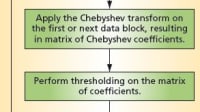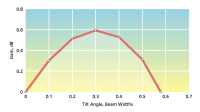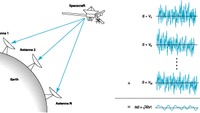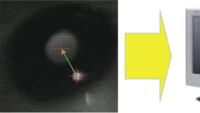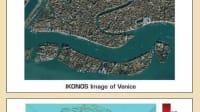Software has been developed to implement the ICER-3D algorithm. ICER-3D effects progressive, threedimensional (3D), wavelet-based compression of hyperspectral images. If a compressed data stream is truncated, the progressive nature of the algorithm enables reconstruction of hyperspectral data at fidelity commensurate with the given data volume.
The ICER-3D software is capable of providing either lossless or lossy compression, and incorporates an error-containment scheme to limit the effects of data loss during transmission. The compression algorithm, which was derived from the ICER image compression algorithm, includes wavelet-transform, context- modeling, and entropy coding subalgorithms.
The 3D wavelet decomposition structure used by ICER-3D exploits correlations in all three dimensions of sets of hyperspectral image data, while facilitating elimination of spectral ringing artifacts, using a technique summarized in “Improving 3D Wavelet-Based Compression of Spectral Images” (NPO-41381), NASA Tech Briefs, Vol. 33, No. 3 (March 2009), page 7a.
Correlation is further exploited by a context-modeling subalgorithm, which exploits spectral dependencies in the wavelet-transformed hyperspectral data, using an algorithm that is summarized in “Context Modeler for Wavelet Compression of Hyperspectral Images” (NPO-43239), which follows this article.
An important feature of ICER-3D is a scheme for limiting the adverse effects of loss of data during transmission. In this scheme, as in the similar scheme used by ICER, the spatial-frequency domain is partitioned into rectangular error-containment regions. In ICER-3D, the partitions extend through all the wavelength bands. The data in each partition are compressed independently of those in the other partitions, so that loss or corruption of data from any partition does not affect the other partitions. Furthermore, because compression is progressive within each partition, when data are lost, any data from that partition received prior to the loss can be used to reconstruct that partition at lower fidelity.
By virtue of the compression improvement it achieves relative to previous means of onboard data compression, this software enables (1) increased return of hyperspectral scientific data in the presence of limits on the rates of transmission of data from spacecraft to Earth via radio communication links and/or (2) reduction in spacecraft radio-communication power and/or cost through reduction in the amounts of data required to be downlinked and stored onboard prior to downlink. The software is also suitable for compressing hyperspectral images for ground storage or archival purposes.
This program was written by Hua Xie, Aaron Kiely, Matthew Klimesh, and Nazeeh Aranki of Caltech for NASA’s Jet Propulsion Laboratory.
This software is available for commercial licensing. Please contact Karina Edmonds of the California Institute of Technology at (626) 395-2322. Refer to NPO-43238.







